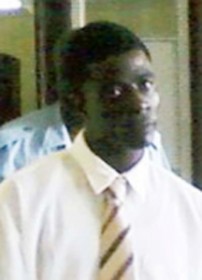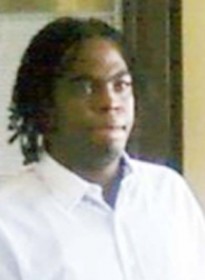– weak ID evidence, no-case submission upheld
Weak identification evidence in the Sumner/Mc Lennon murder trial resulted in Justice Roxane George upholding a no-case submission by the defence and subsequently ordering the jury to return a formal verdict of not guilty.

“To send this case to the jury would be a great injustice,” Justice George said yesterday, adding that it would be an injustice not only to the two accused and their families but to the family of the deceased as well.
Trion ‘Latie’ Sumner – after more than six years of imprisonment – walked away from the Demerara Assizes a free man, while Quincie ‘Killer’ Mc Lennon, though relieved of the murder charge, remained in custody owing to another indictment pending against him.
Sumner and Mc Lennon were accused of murdering Odingo Dungham on January 9, 2004. Dungham’s bullet-riddled body was discovered in a clump of bushes a few feet south of the Railway Embankment, on Church of God Road, Buxton, East Coast Demerara. On August 10, 2004, Sumner was jointly charged with McLennon with the murder.
After the six-year delay – due in part to the prosecution’s inability to locate all the witnesses – the men’s trial commenced late last month. Prior to this Sumner had been granted bail by Justice James Bovell-Drakes.
Defence attorney Basil Williams made no-case submissions on Tuesday morning.

Later that day, State Prosecutor Judith Mursalin responded to these submissions and the matter was adjourned for ruling.
During her ruling on Williams’ submission the judge cited several cases in support of her decision owing to lack of sufficient evidence, particularly as it related to the identification of the two accused.
Later, after Justice George directed that a not-guilty verdict be returned, she chose to make brief comments. It was her duty as the judge presiding over the Sumner/Mc Lennon case, Justice George explained to the jury, to decide whether there was sufficient evidence to continue.
“This was not a good case from the beginning,” Justice George told the jury, later adding, “Not because a person has been discharged it means they are innocent.”
The main witness, Errol Adams, according to the judge, was unreliable.
At the beginning of the testimony, when questioned about whether his testimony in the High Court would be the truth to which he swore during the preliminary inquiry in the magistrate’s court, Adams said: “I don’t know which version is the truth but I am telling the truth”.
Adams had testified that around 2.30 pm on the day in question he and the deceased, Dungham, went into Buxton. He told the court that they were attacked by five men – four were armed with guns and the other with a piece of wood.
The other members of the group were identified in court as David ‘Biscuit’ Leander also known as David Zammet, Simeon Hope and Orlando ‘Bullet’ Andrews. All three are dead.
Poor investigation
Sumner, the witness testified, lashed him in the head and while running away he heard gunshots; at this point Dungham was on the ground. If it is as Adams said – that he heard the gunshots while running away – then this is an assumption and assumptions cannot be relied on, Justice George stressed.
Adams, the judge said, made “materially different statements” during his testimony. After Adams started running, he said he didn’t know what happened as he headed straight to the Vigilance Police Station.
At the police station Adams told a policeman that he had been attacked by five men and that he knew them. Later, when asked during court proceedings to identify the accused Adams could not tell the court which was the number one accused and which was the number two.
The policeman who took Adams’ report that day told the court that he only had the descriptions of the attackers and no names. However, he later told the court that he had no description and no names. If the police had no description of these men and no names, Justice George questioned, then how did they arrest them in the first place?
There was no identification parade during which either Sumner or Mc Lennon was identified, there was no general description of either accused given by the witness in court; as a result dock identification was not carried out. Police, the judge said, provided no evidence to identify either Sumner or Mc Lennon.
These points all show that a poor investigation was done by police, Justice George said. She further told the jury that Mursalin did the best job she could at prosecuting the case using the materials provided to her.
Justice George told the jury that they should not develop any opinion since they must enter the courtroom free of prejudice.
The prosecutor, she said, presents a good case when there is enough evidence. If there is no evidence or not enough evidence to prove an accused guilty beyond a reasonable doubt then this is no fault of the prosecutor.









